
I had heard so many great things about Karajini National Park from various people that I was looking forward to experiencing it first hand. We had purposefully booked five nights in Dales Campground to give us time to visit as many gorges as possible. After our two nights in a motel at Port Hedland, it was back to camping. It also meant that temperatures were about 10 degrees lower. Yet again our stay here was a mixed experience that almost ended in a less than happy outcome.
Road Trains
The 500 km journey from Port Hedland to Dales Campground was very interesting. We had first sight of the iron ore trains on the move, delivering their cargo to Port Hedland and on to China. It is quite a sight to see these very long snakes making their way along the railway line. We later learned that each wagon holds 50 tonnes of ore, each train up to 25,000 tonnes and each ship 180,000 tonnes. (On leaving Karijini we passed at least 5 of these trains bound for Dampier). This gave us a really good impression of the size of the mining industry in the Pilbara and the importance of it to the state national economies.
For the first half of the journey, we had a good run, but then we caught up with a few road trains. As these are up to 60m long, overtaking can be quite a challenge. So for a large part of the remaining journey, our view was the back end of a road train!
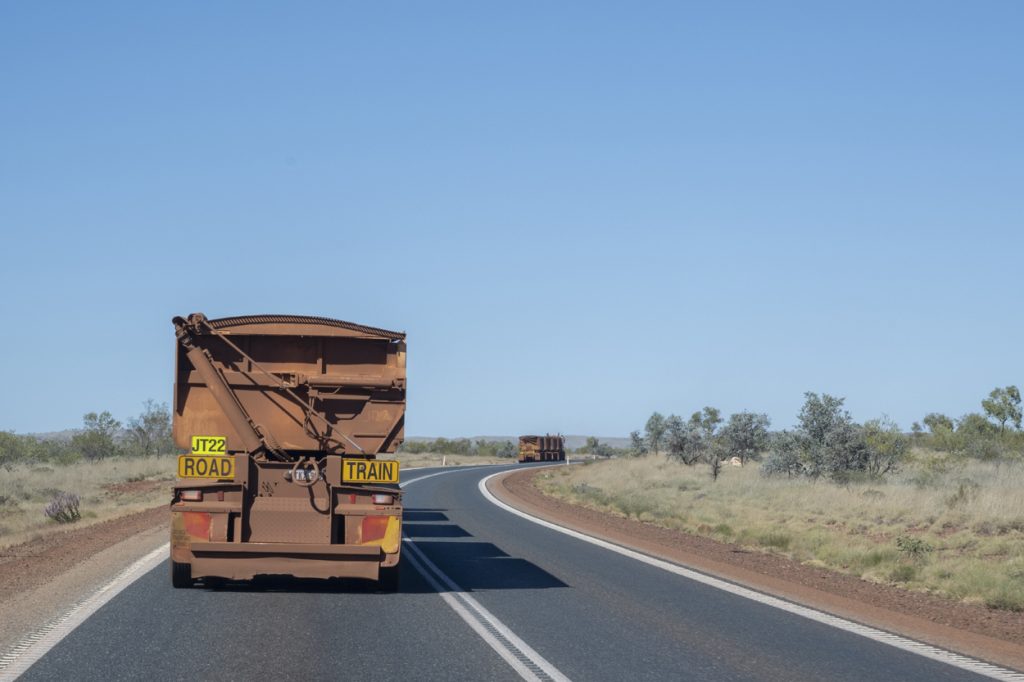
Dales Gorge
At 627,441 hectares, Karijini National Park is Western Australia’s second largest national park, set in the Hamersley Ranges, just north of the Tropic of Capricorn. It offers spectacular scenery and amazing geological formations that include numerous deep gorges.
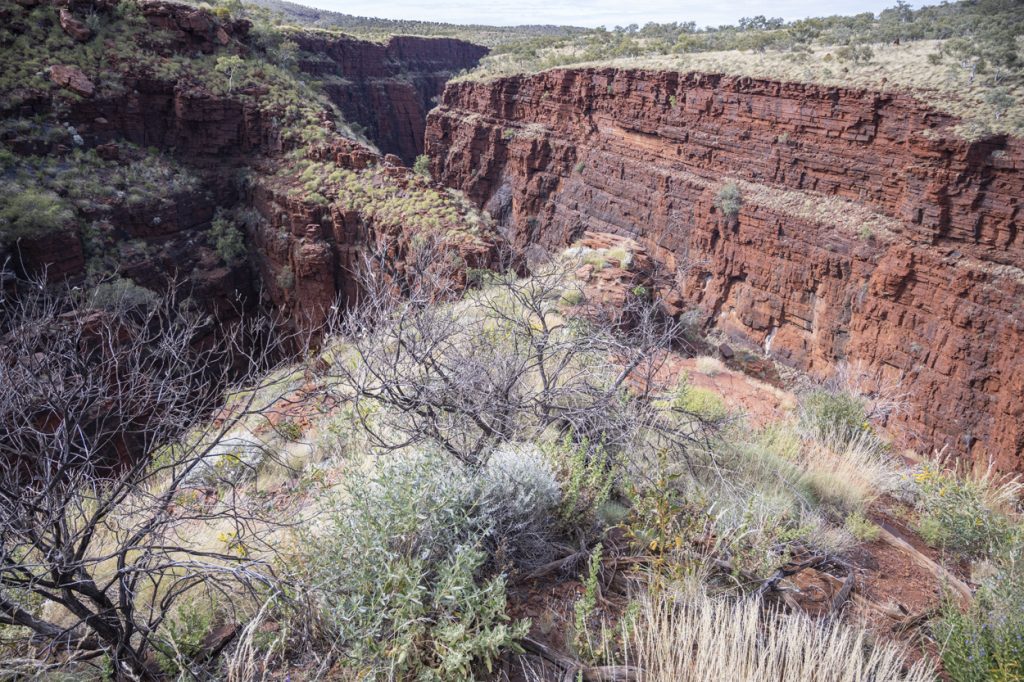
Dales Campground is located next to Dales Gorge which is the most easterly gorge. This was our first venture into the gorges on our first full day. The walk along the top rim of the gorge from the car park took us to the top of a series of steep steps set into the face of the gorge. The descent leads to the floor of the gorge (this was something we got used to during the next few days). The vegetation along the base of the gorge was quite varied from low grasses to tall trees. It is hard to believe that they survive the volumes of water that flow through during the cyclone season.
The gorge walk ended at the Fortescue Falls, which, by the time we arrive, was pretty busy. A bit further on was the Fern Pool and sacred place of significance for the aboriginal community. This was quieter and less crowded than the Falls.

The next day we drove almost 80 km to the next cluster of gorges: Weano Gorge, Hancock Gorge Knox Gorge and Joffre Falls with no real intention of tackling them all.
Weano Gorge
This walk started with a descent down a series of steps to the gorge floor. Here was a large pool where swimming is permitted and a side walk that was closed due to ‘recent incidents’.
I should say at this stage that most of these walks are classed as grade 4, so they can be quite difficult. Recent cyclones caused rock falls, resulting in a few of the walks being closed.
The walk along Weano Gorge floor was somewhat similar to Dales Gorge, with close up views of the rock formations and local vegetation.
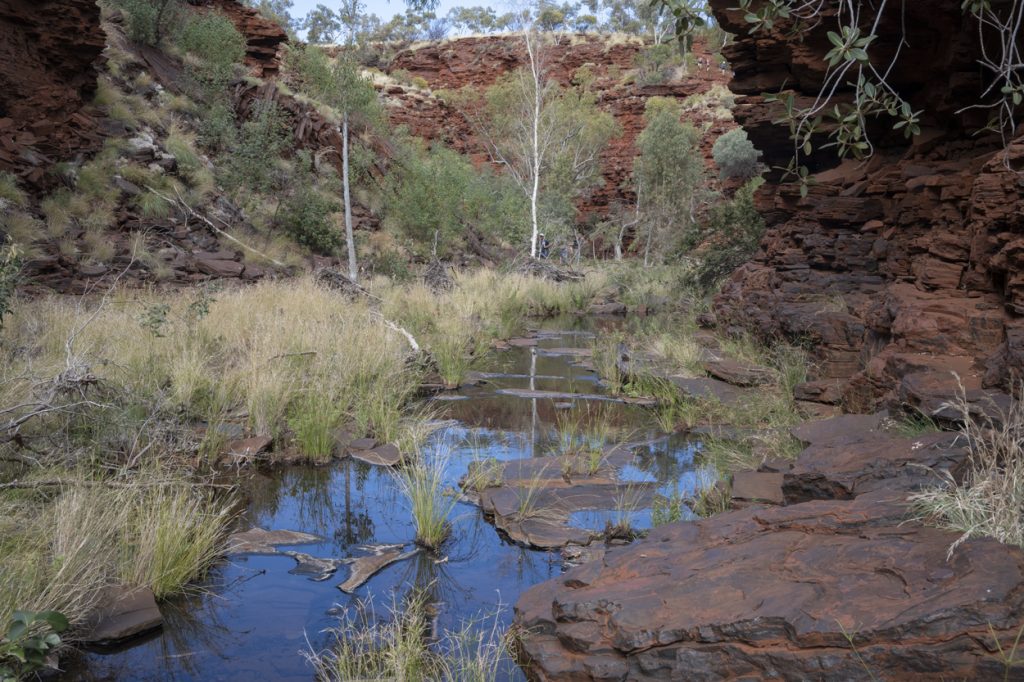
Hancock Gorge
Classed as a Grade 5 walk this is the most challenging walk in the Park that includes wading and swimming through ice cold water. It includes:
- The usual steep descent, partially by ladder
- A casual walk to the start of the tricky bits
- A knee high wade through water
- A wade through chest high water
- A ‘spider’ walk through a very narrow section with water flow
- Finishing at a deep pool that can be swum across to look into, but not enter, the next gallery
We had decided not to tackle this one, only to look from the top of the descent. When we got to the top, it didn’t look too bad, so down we went. The first section was fine, and, after donning our aqua shoes, we both waded through the first water obstacle. Due to the depth of the next water section, K elected to stay behind. However, I proceeded with my camera in a water proof bag to the next section, aptly named the amphitheatre. At this stage it was clear I would need both hands and feet, so I left the camera before progressing. I must say the spider walk was very difficult and the swim at the end very cold, but I made it!
On the return, I picked up the camera and about to leave the amphitheatre when I took my eye of my feet for a second and down I went, crashing into a rock.
When I look back on it anything could have happened, broken:
- Ankle
- Leg
- Pelvis
- Arm, etc
Potentially worse, and the consequences not worth thinking about, I could have hit my head!
However, apart from a few bruises and scratches, the only things that were broken were:
- My camera (it landed hard on the rock)
- My confidence
No more grade 5 walks for me!
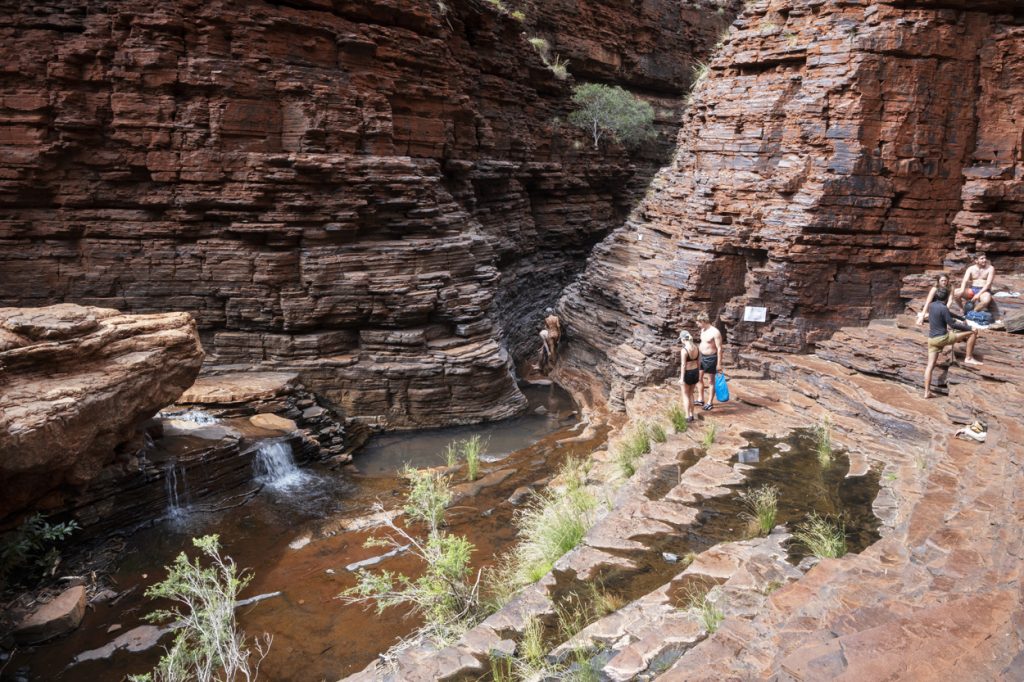
Kalamina Gorge
On the third day we went to Kalamina Gorge. Although rated at a grade 4 walk, this was a more gentle walk and my favourite gorge. The water gently flowed down through cascades and large mirrored pools. As another walker said, this was more about the journey than the destination.
I approached this walk with great care and focused on every step as we made our way along the 3km track. However it was an easy and very enjoyable grade 4.

The Geology
The banded iron formations that are exposed in the gorges result from 2500 million years of iron and silica rich sediment being compressed, turning it into rock. The pressure caused the layers to buckle, creating cracks which were then eroded by water flows over time to form the gorges (my simplistic explanation). One of the warnings on signs around the gorges advise visitors of blue asbestos. Sure enough, exposed layers of this hazardous mineral show how fibrous it is, but not its inherent danger to health. This, of course was not known when it was mined in this area not that many years ago.

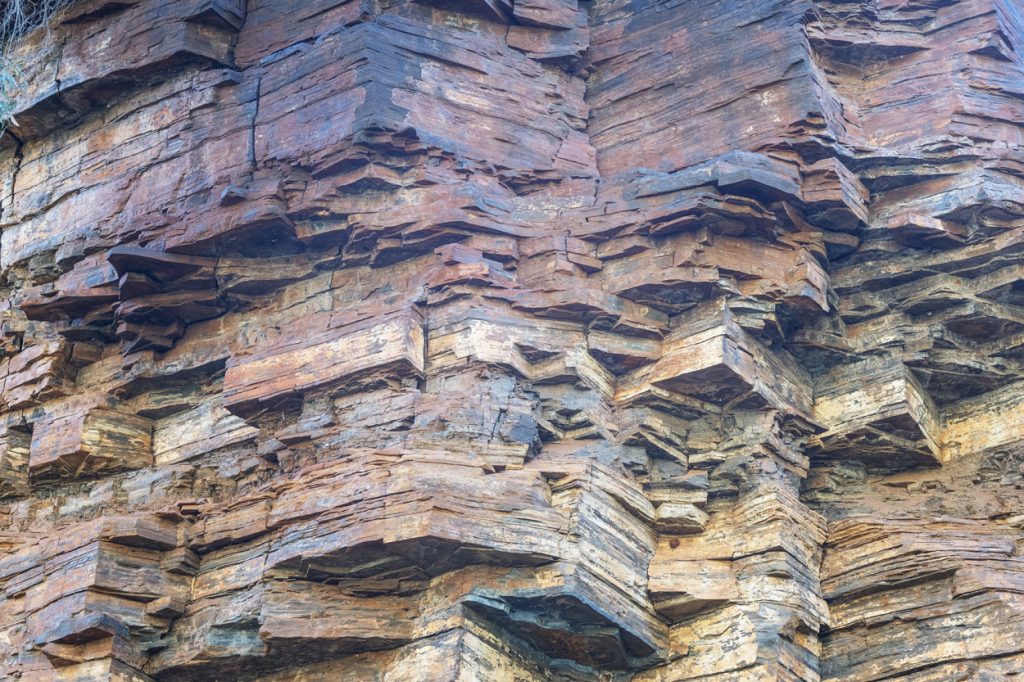

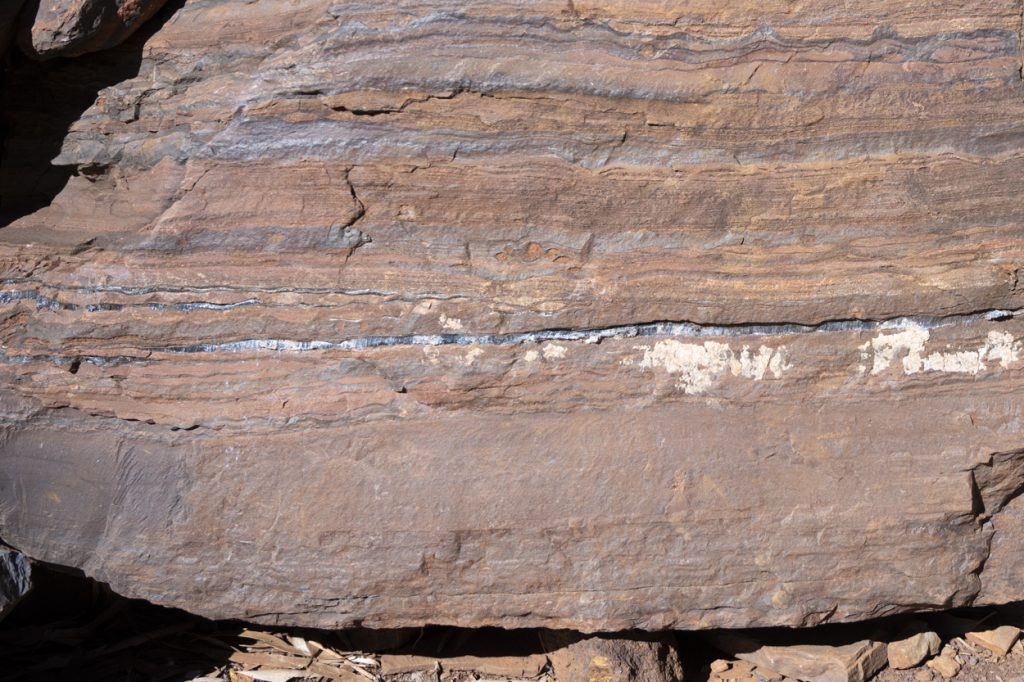
See if you can spot the layer of blue asbestos in the last image.
Friday 30 July
Just over four weeks until we return (Covid permitting) – I am sure this will disappear very quickly, but until then, we have a few more interesting places to visit. In particular, we are looking forward to the wildflowers with great anticipation.
In the meantime, we are enjoying a couple of days in Dampier before heading further south to the Coral Bay area.

2 Responses
Glad to read about your interesting travels and happy you are safe Martin despite the near miss you could have had! Take care enjoy the rest of the trip both of you. Cheers Lorna
Martin
Sorry to hear about your fall. I had a similar experience at Eden NSW some yours ago and can empathise with your comment about confidence. It took quite a while to feel confident on the cliffs again.
As you say, it could have been much worse!